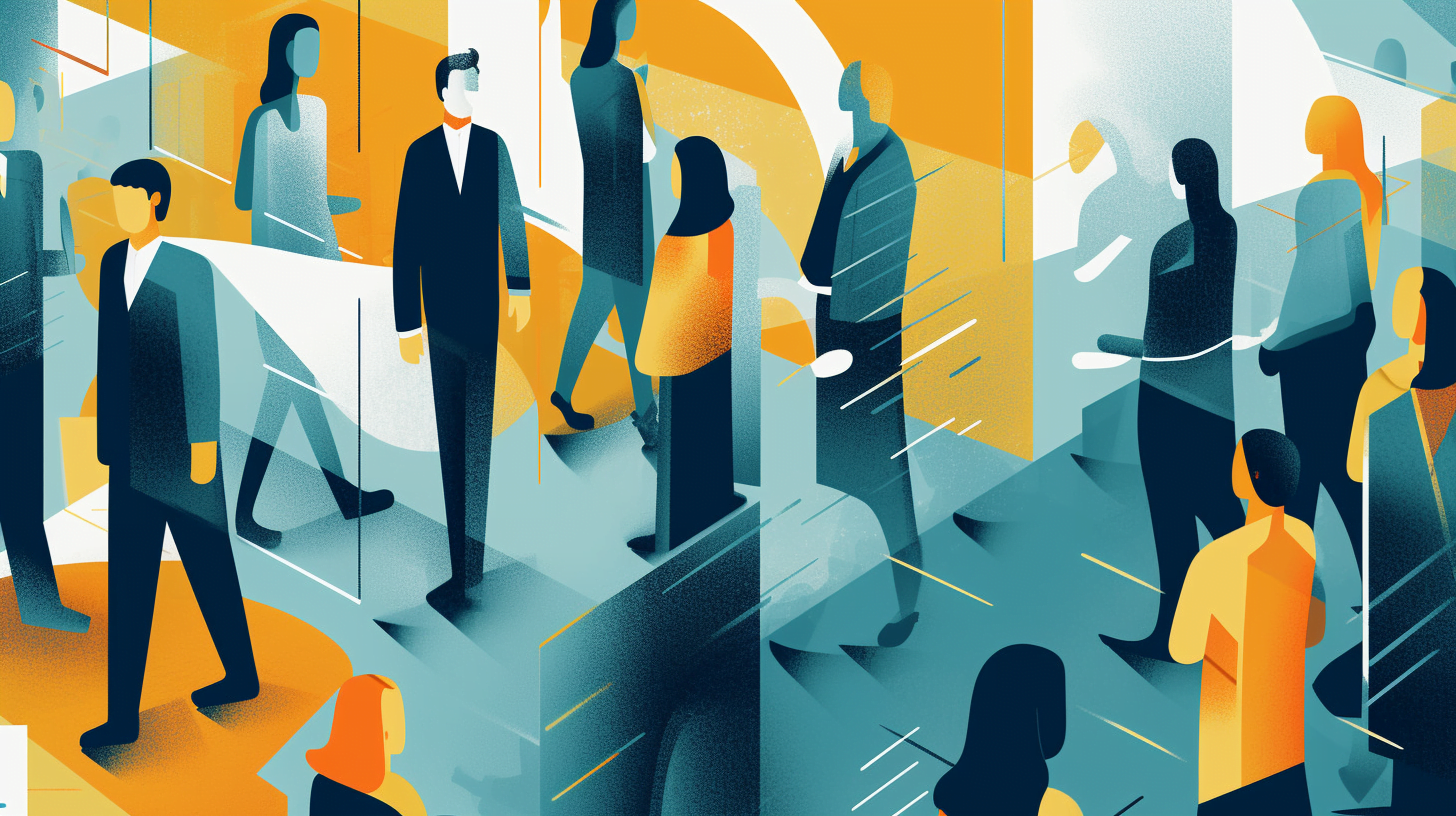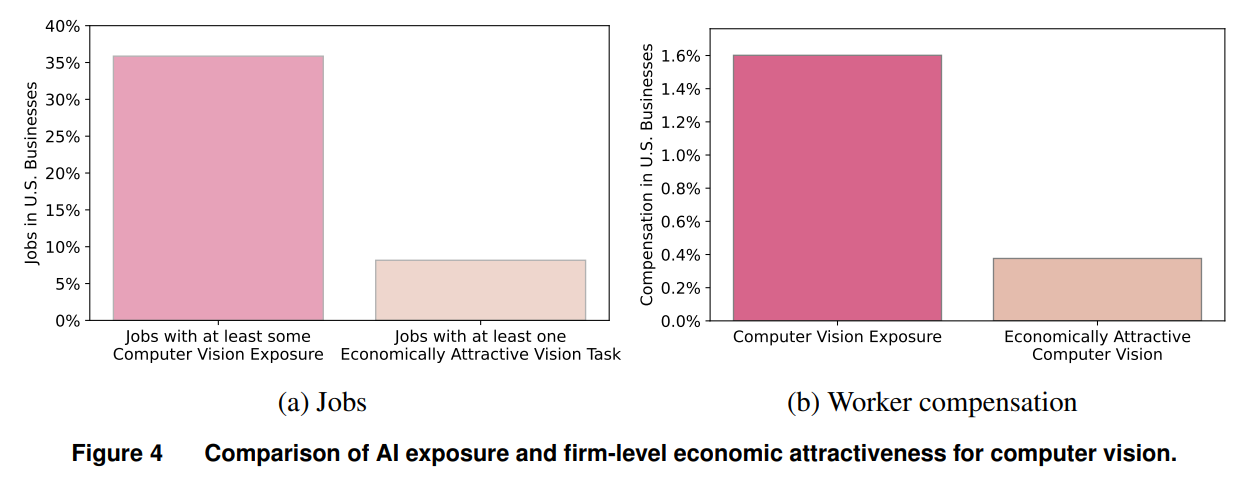Visual AI may change the job market slower than expected because it's too expensive

Key Points
- A recent study by MIT CSAIL challenges the assumption that AI will quickly replace many jobs. It suggests a gradual transition. But it only looked at visual tasks.
- The study shows that only 23 percent of these tasks could be cost-effectively automated by visual AI systems, representing just 0.4 percent of the total economy. The high customization and maintenance costs of AI systems for certain tasks may not be economically viable for smaller companies.
- Studies that also look at the impact of text- and image-based AI systems on the labor market suggest much larger disruptions. The International Monetary Fund (IMF), for example, warns that AI could potentially affect up to 60 percent of jobs in advanced nations, particularly in highly skilled cognitive fields.
A recent study by MIT's Computer Science and Artificial Intelligence Laboratory (CSAIL) challenges the assumption that AI will quickly replace large numbers of jobs.
The study, which looks at the economics of replacing human labor with AI, suggests a gradual transition. But keep in mind that the researchers only looked at visual tasks, such as final inspection of products for defects or quality control of food.
While 36 percent of non-agricultural jobs in the U.S. have at least one task that could be automated with computer vision, only 8 percent (23 percent of visual tasks) have at least one task that would be economically attractive for companies to automate.

According to the study, such visual AI systems could currently perform tasks that account for 1.6 percent of employee compensation in the U.S. economy (excluding agriculture). This is equivalent to 0.4 percent of the total economy.
Visual automation is not economically attractive enough for many companies, and may remain so for some time
The MIT study points to the high costs associated with fine-tuning AI systems for specific tasks, which could be uneconomical for smaller businesses.
The researchers illustrate this with the example of a bakery, where the high investment and maintenance costs of an AI system for food quality control would exceed the potential savings from automating the task. It is estimated that such quality checks account for about six percent of a bakery's labor hours.
In an interview with TIME, lead author Neil Thompson emphasized that while AI has the potential to significantly impact the job market, the transition to automation through AI is not so imminent that it will cause immediate chaos. Policymakers have a window of opportunity to take steps such as retraining.
For AI researchers and developers, the study underscores the importance of reducing the cost of deploying AI and expanding the scope of AI to make automation more economically attractive to businesses.
"Much has been written about the future impact of AI on the labor market, primarily using measures of exposure. However, these estimates often rely on the assumption that if a job can be automated, it will be," says Antonin Bergeaud, Associate Professor of Economics at HEC Paris.
"Svanberg and coauthors' research adopts a fresh perspective by meticulously estimating the costs of implementing these technologies, from installation to maintenance. It finds that even an AI system that is 'only' as good as a human would often be prohibitively expensive to adopt, compared to current labor costs in the U.S. The conclusion is striking: a much smaller share of the labor market is at risk of automation than direct estimations based on exposure would suggest."
LLM studies predict major changes in the labor market
Studies involving large multimodal language models, such as OpenAI's GPT-4, that are capable of using tools predict far greater disruptions to the labor market.
The International Monetary Fund (IMF) recently warned that AI could affect nearly 40 percent of jobs globally, and up to 60 percent in advanced economies.
The OECD emphasizes that for many workers, the impact of AI will not be a loss of jobs, but a change in work tasks and the quality of work. However, up to 27% of jobs are threatened by AI, especially highly skilled cognitive jobs such as managers and engineers.
A study released by OpenAI found that large language models such as GPT-4 could affect at least ten percent of the work of about 80 percent of U.S. workers. For 19 percent of workers, language models could change at least 50 percent of tasks.
These findings are consistent with the Pew Research Center's predictions that 19 percent of jobs could be significantly impacted or even eliminated by AI.
However, the Pew study also emphasizes that the exact impact of AI on the labor market is difficult to estimate, and that new jobs and businesses will be created in addition to job losses.
In May 2023, the World Economic Forum released a comprehensive report, the Future of Jobs Report 2023, based on responses from more than 800 companies surveyed. Employers predict that about a quarter (23%) of jobs will undergo structural change over the next five years. The supply chain and transportation, media, entertainment and sports sectors will be particularly affected by these changes.
IBM has announced that it plans to replace up to 7800 jobs with AI over the next five years.
AI News Without the Hype – Curated by Humans
As a THE DECODER subscriber, you get ad-free reading, our weekly AI newsletter, the exclusive "AI Radar" Frontier Report 6× per year, access to comments, and our complete archive.
Subscribe now